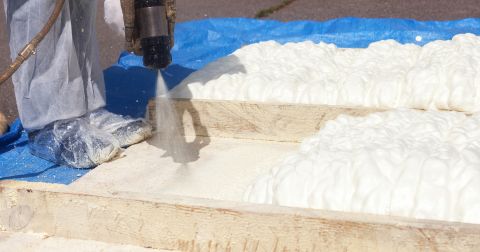
Intumescent coatings are an essential element in modern fire prevention and protection. These coatings work by expanding when exposed to high temperatures, creating a thick layer of insulation that helps to slow down the spread of fire.
You may know their importance, but how exactly do these coatings combat fire on a scientific level? Let’s examine the science behind fire-resistant intumescent coatings.
Understanding Intumescence
An intumescent material instantly swells when exposed to heat. You will quickly learn the importance of binders when examining intensive assessments of flame-retardant coatings. For those unaware, the binders in the coating react with the heat, causing them to expand and create a layer of foam-like insulation.
This layer of foam acts as a barrier, preventing heat and flames from temporarily penetrating the underlying material. This delay gives people more time to evacuate the building and firefighters more time to contain and extinguish the fire.
The Role of Char Formation
Intumescence involves char formation in addition to the coating expansion. As the coating expands, it begins to create a layer of char on the surface. This protective layer is highly insulating and helps to combat the spread of fire.
The char does not extinguish fire, but its durable design will withstand the heat for a specific amount of time, which can range from minutes to hours, depending on your specific coating. The chemical makeup and application of the binders in the coating play a crucial role in determining how much char will form, and its effectiveness as a barrier.
For example, our TB-Pro spray foam thermal barriers at Flame Seal will swell in the presence of fire or acute heat. Ensuring ample coverage requires you to apply the coating correctly, which is why choosing a high-quality, tested, and approved intumescent coating is important.
Testing and Quality Assurance
The science behind fire-resistant intumescent coatings is not just theory–it is backed by extensive testing and quality assurance processes. These coatings must undergo rigorous testing to ensure they meet safety standards and perform as expected in different fire scenarios.
For instance, the TB-Pro from Flame Seal meets the requirements of E84 Class A, IBC 803.1.2.1. This requirement ensures you are investing in an intumescent coating that will protect the property you’re working on.
An intumescent coating is more than a material that combats the spread of flames. It can expand and create char formation to their rigorous testing and versatile applications. As a result, these coatings are an essential component of modern fire protection. By understanding the science behind them, you can better appreciate their critical role in keeping buildings and people safe from fire.
